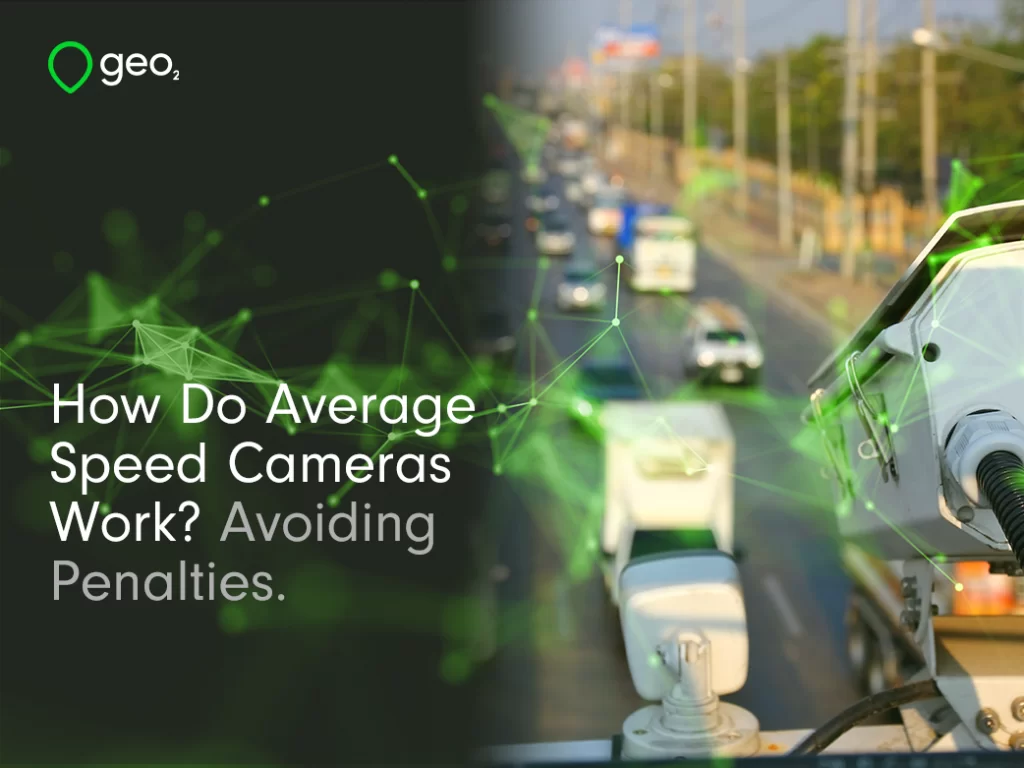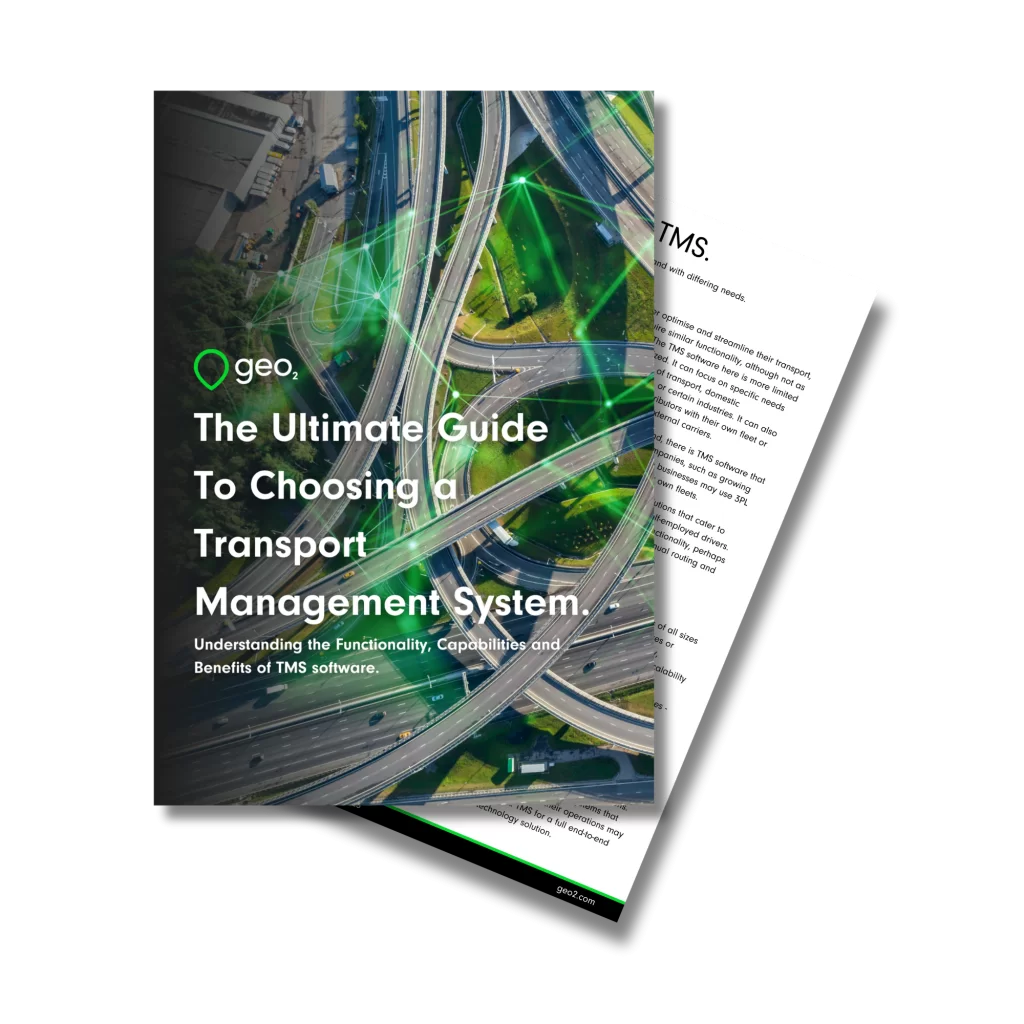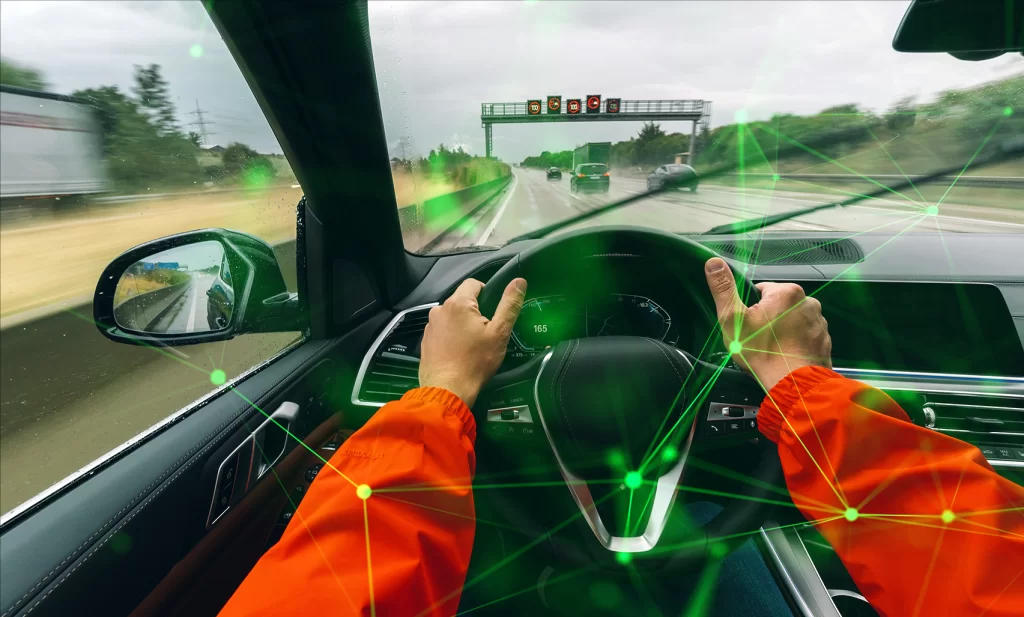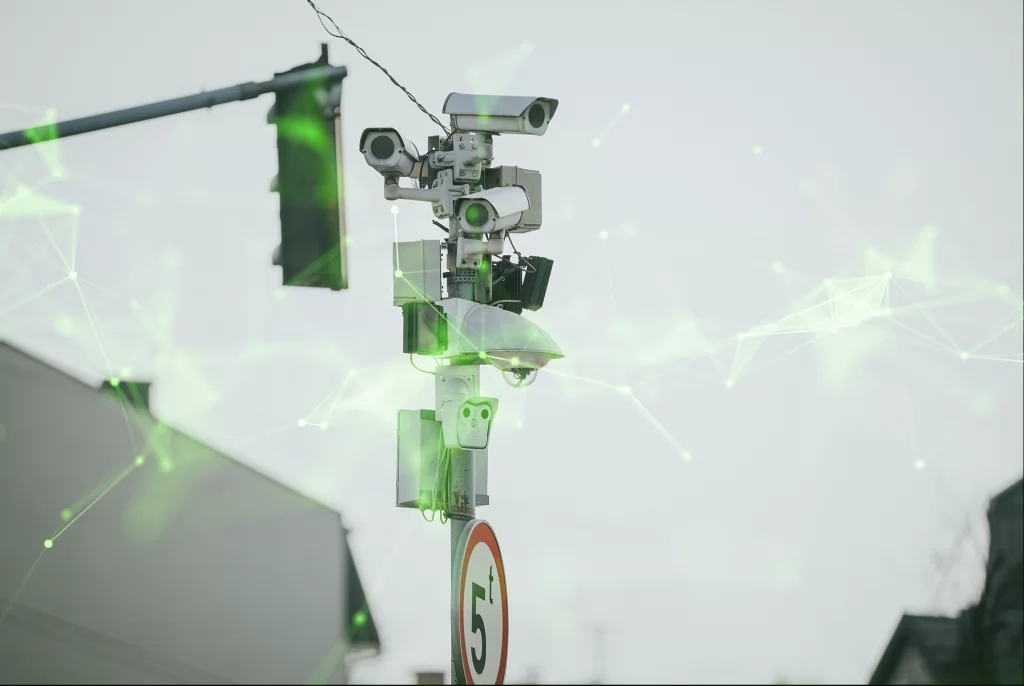
How Do Average Speed Cameras Work? Avoiding Penalties.
Introduction.
Picture this: you’re driving on a Smart Motorway. Ahead, a yellow box looms with a camera peering down at the passing traffic. But unlike traditional speed traps that capture your speed in a flash, this system is monitoring your journey, calculating your average speed over a defined distance. This is the ingenious and increasingly common world of average speed cameras.
The concept behind these vigilant electronic sentinels can sometimes be misunderstood or even mystifying for drivers. Yet, their purpose is straightforward—enforcing speed limits over a length of road rather than just at a point. Let’s shift gears and delve into how these systems are making strides in road safety and impacting driving behavior.
Need help choosing a TMS?
Download the Free Guide Now.

Table of Contents.
Understanding the Mechanics: How Do Average Speed Cameras Work?
Average speed cameras, also referred to as SPECS or VECTOR systems, employ Automatic Number Plate Recognition (ANPR) technology. Implemented in zones where consistent speed control is critical—such as construction zones or known accident hotspots—they scrutinize vehicles’ travelling times between two points.
Here’s a breakdown of its components:
- ANPR Cameras: These are the eyes of the system, strategically placed at separate locations along a stretch of road. They capture images of every vehicle, recording their license plates and timestamps.
- Data Processing: The core where the average speed is calculated. By analyzing the time it takes for a vehicle to travel between two points, the system computes the speed.
- Violation Flagging: Vehicles that exceed the average speed limit for the zone get flagged. These details are then reviewed and, if warranted, result in a speeding violation.
Peeling back the layers shows a network of sophisticated hardware and software working together. It’s far more complex than merely capturing a vehicle at a single moment in time. The genius lies in its continuous monitoring, culminating in a robust mechanism that maintains sustained speed control—proven to lessen the frequency and severity of collisions.

Table of Contents.
The Strategy to Avoid Penalties: Stay Informed and Compliant.
Attempting to ‘beat’ average speed cameras isn’t just ineffective—it undermines the integral focus on safety. The objective should not be to deceive a system but to adhere to driving laws designed to protect you and others. Here are practical tips to maintain compliance:
- Understand the Zone: Knowing where average speed camera zones begin and end is paramount. These are usually well-signposted.
- Maintain Even Speed: Rather than accelerating and decelerating, keeping a steady pace within the speed limit is the surefire way to remain compliant.
- Stay Alert to Changes: Be alert for any variations in the speed limit within the monitored stretch due to road conditions or time-dependent restrictions.
- Be Aware of Other Vehicles: The system records the time that it takes for a vehicle to travel between two points. If a fast vehicle is in front of you, it’s essential to maintain a safe distance and avoid driving too close, which could impact your average speed.
It’s a blend of vigilance and discipline that contributes to not just averting penalties, but more importantly keeping yourself and others safe on the roads.
Innovations in Road Safety: The Statistical Validation.
The deployment of average speed cameras isn’t driven by mere speculation. Statistical evidence validates their efficacy. Studies consistently demonstrate a decrease in speeding incidents and crash rates where these systems are in place. A 2010 study from Cochrane found that there was a reduction in crashes ranging from 8% to 49% in the vicinity of speed camera zones Reductions in fatalities and serious injuries are notable outcomes, underlining the tangible societal benefits these cameras contribute to.
For supply chain industries that rely heavily on over-the-road transport, these innovations equate to more predictable transit times, decreased risk of goods damage due to accidents, and reduced costs from potential speeding fines—an alignment with both ethical practices and bottom-line enhancement.

The Double-Edged Sword: Pros and Cons of Average Speed Cameras for Drivers.
Average speed cameras undoubtedly have a critical role in promoting safer driving conditions. However, similar to any technology, they present both advantages and disadvantages for drivers.
Advantages:
- Improved Safety: Average speed cameras enhance road safety by deterring speeding and encouraging consistent speed compliance. They are proven to decrease the risk and severity of accidents, leading to safer roads for all users.
- Fairer Enforcement: Unlike point-based systems, average speed cameras account for the overall speed of a vehicle over a distance, thus providing a more accurate reflection of a driver’s behavior.
- Greater Awareness: The visible presence of these systems raises drivers’ awareness about the importance of obeying speed limits and cultivates more responsible driving habits.
Disadvantages:
- Inconsistent Speed Limits: In areas where speed limits fluctuate, drivers may find it challenging to accurately maintain their average speed.
- Distractions: Some drivers may feel compelled to frequently check their speedometer to ensure compliance, which could distract from their primary task of safe driving.
- Technological Failures: Like any technology, average speed cameras are susceptible to malfunctions or inaccuracies, potentially resulting in unjust penalties. However, regular maintenance and calibration mitigate these risks.
Drivers must weigh the pros and cons when it comes to average speed cameras. Ultimately, they serve as a valuable tool in promoting road safety while also improving overall driving behavior for a more efficient and sustainable future.
It’s important to understand that the purpose of these systems isn’t to trap or penalize drivers, but to facilitate a safer driving environment. By staying informed and practicing consistent, responsible driving habits, one can reap the benefits of this technology while minimizing potential drawbacks.

The Call for Modern Conscious Driving: A Collective Responsibility
In an increasingly fast-paced world, where delivering goods and services swiftly is key, average speed cameras stand as guardians of responsible driving. As road users, there’s a social contract that we engage in—one that values human life and the collective safety of our communities.
Modernization within the transportation and supply chain industry necessitates embracing technological advancements such as average speed cameras. They aren’t merely regulatory obstacles but facilitators of a safer driving environment. Progressive adoption paired with a deep understanding of these systems heralds a future of conscientious driving practices within the industry.
Concluding the Journey: Safer Roads, Safer Communities
Innovative average speed camera systems underscore a critical investment in infrastructure, serving a dual purpose: enforcement and deterrence. Their presence on our roads is a constant reminder to take heed of speed limits, subsequently reducing the risk of severe accidents and promoting a culture of proactive road safety.
Here’s what you should drive away with:
- Average speed cameras meticulously measure your average speed over a stretch of road, championing consistent traffic flow and safety.
- Attempting to outsmart these systems is not viable and poses a significant safety risk.
- The transport sector has a vested interest in adopting and advocating for such technologies for enhanced operational efficiency and public welfare.
We invite you to `join the dialogue` on road safety within the supply chain industry. Share this blog post with your network or subscribe to our newsletter for further insights and updates. Together, we can pave the path towards improved road safety, accountability, and innovation in our driving habits.
Your journey matters, and every decision behind the wheel contributes to the collective driving experience. Let’s commit to informed, responsible driving—a shared vow to keep our roads safe for everyone.
For further reading on how technologies influence supply chain efficiency and safety standards, explore our other informative blog posts.






